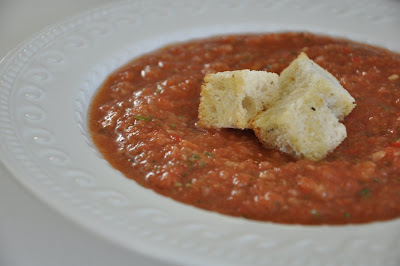Remember that high school band? The one that burst through my door as confetti fell from my ceiling when I posted my gazpacho recipe way back in August. Well, I don't think they'd be so proud of me now. I'll be lucky if they don't try to stuff me in their tuba.
The reason is this -- I have been sitting on this post for an inexcusable amount of time. Sometime back in July, I emailed my friend Philippe asking if he'd ever be interested in cooking something together. Philippe is this amazing French chef with a schedule about as crazy as mine, yet because he is such a wonderful friend, he wrote back and his response included the word, "YES" (I mean, in all caps, no less!).
I was beyond excited. We set ourselves to the task of deciding what to make. I made some vague, general (read: useless) suggestions, so Philippe decided he'd go straight to a trustworthy source for a recommendation. He emailed his mom in France and she suggested a tart she had just had a family celebration. He forwarded the recipe to me for approval. It was in french and I couldn't read it, but how could I not say yes?!
Philippe explained this is more "french-fusion" than anything (hello mango sauce), however the simplicity of recipe and the combination of flavors reminds me exactly of something that I could imagine myself ordering off the menu of some off-the-beaten-path french cafe. How can you go wrong with anything that conjures that kind of an image?
Do not fall prey to my old way of thinking, that anything containing sea scallops, or anything French for that matter, is too complicated to make. This could not be simpler. You prepare and bake a crust (or buy a pre-made one!). While the crust is baking, start carmelizing the onions. Make the mango sauce (or make it a day ahead!). Prepare the scallops any way you prefer, such as searing them in a skillet, or, as we chose, poaching them in butter. Then you layer the onions into the crust and top with the scallops. Drizzle with mango sauce before serving. Simple and delicious. Let's get into details* below.
*When I say "details", I mean I'll describe what I was able to write down during this whirlwind cooking adventure. Philippe, being the true chef, doesn't cook using recipes, and therefore, you'll see our basic ingredients and instructions below followed by disclaimers such as "adjust as necessary!", "to taste!", or "you might want to buy this in a store!".
The Mango Sauce:
3-4 large ripe mangos, peeled and cubed
1 cup of chicken stock
1 cup of heavy cream
salt & pepper to taste
Combine ingredients in a blender or food processor and blend to a smooth consistency. Be sure to taste as you go and make adjustments as necessary!
Carmelized Onions:
2-3 onions (we used red onions)
Olive oil
Butter (optional)
Sugar (optional)
The trick to carmelizing onions is to slowly cook them over moderate heat to break down and carmelize the onion's natural sugars.
Start by thinly slicing your onions. Then heat some olive oil (or a mix of butter and olive oil) over medium heat in a large skillet or saute pan. Throw in your onions and stir to coat with oil. Spread the onions out evenly and then simply let them cook, stirring occasionally. Adjust the temperature if it looks like it's too hot or is drying out the onions. After a while, sprinkle some salt and some sugar (if desired) over the onions and stir.
Let the onions cook for a while - about 30 to 60 minutes, until they are nice and soft and nicely browned.
The Scallops:
12 good quality sea scallops
salt & pepper
1-1/3 cups butter
a squeeze of lemon
I was watching a cooking show and the chef was explaining about different ways to prepare scallops. He then picked up a raw scallop and took a huge bite out of it! Apparently, scallops are safe to eat raw, as long as they're very fresh and you bought them from a trusted source. This helped me be a bit less afraid of undercooking them, and more afraid of overcooking them, which can make them rubbery.
First, pull off any adductor muscles still attached to the scallops and then salt and pepper to taste. Melt the butter in a saucepan over medium heat. When the butter is hot, add the scallops and cook, turning once, about 2 to 4 minutes, or until cooked through. Remove scallops from pan.
The Crust:
Here's where I let you down. I still do not have a really good homemade crust recipe that I love and trust, and so I can only advise you to use the recipe you love and trust (and maybe, you know, you could share your recipe with me...) OR, save some time and buy a store-bought crust. No one here will judge you, I promise.
If you do make your own crust, I saw Philippe throw some cheese into his to make it more savory. It was very worth it.
Assemble:
Layer the onions in the crust and top with the scallops. Drizzle the sauce over individual portions, or serve on the side. Easy and delicious!!
I can also see this served in a mini version - perhaps baking the crust in small tartlette pans, topping each portion with one to two scallops.
















